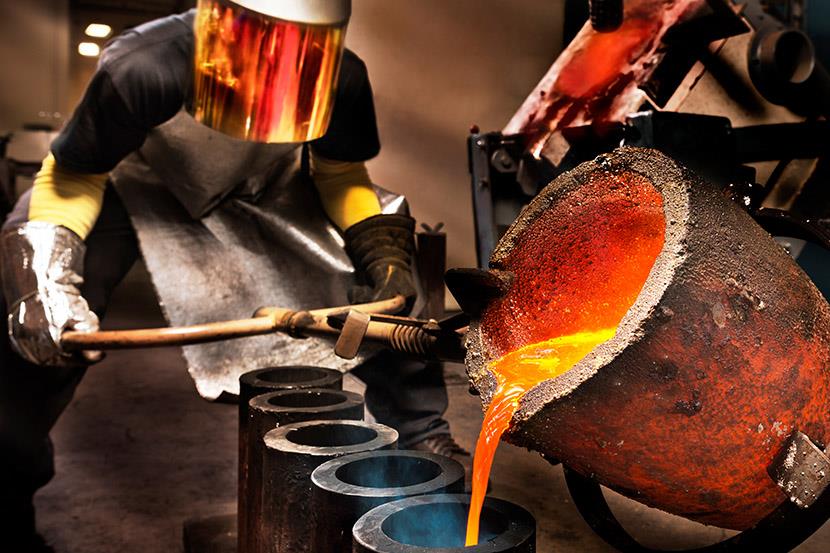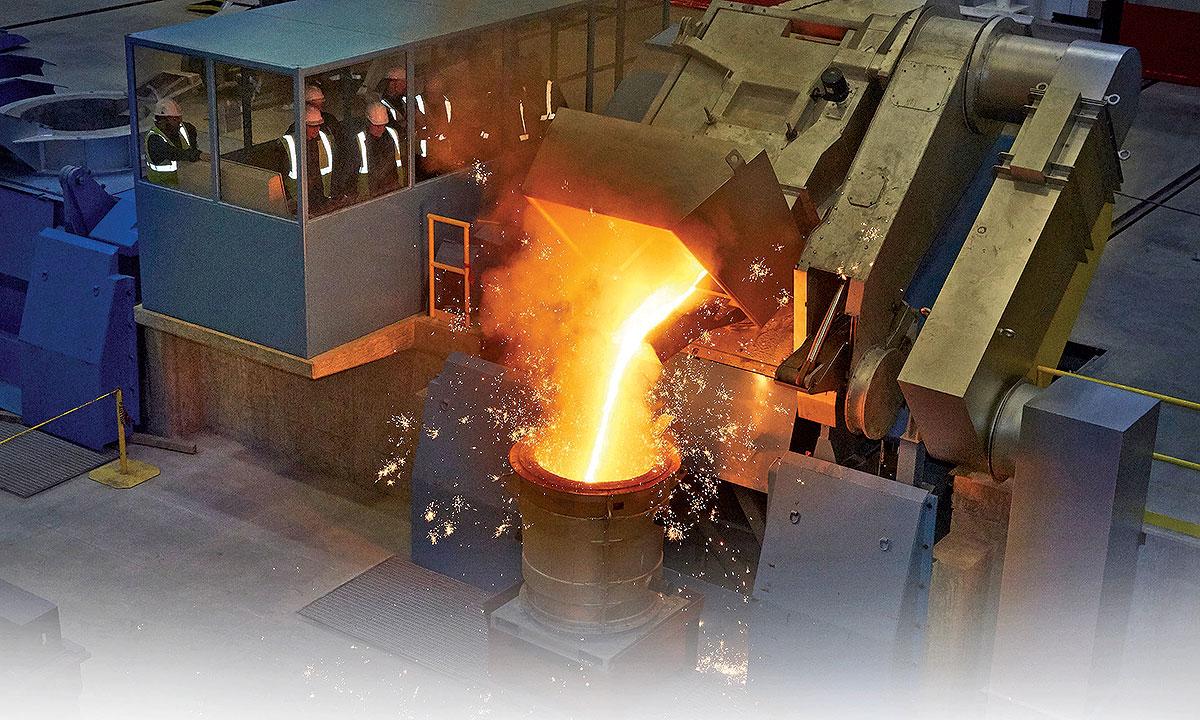Why choose an Aluminum Foundry the best option for precision manufacturing
Wiki Article
Revealing the Complexities of Style and Manufacturing at a Metal Foundry
The design and manufacturing procedures at a metal foundry involve a series of intricate steps. Each stage, from choosing raw products to melting and casting, plays a critical function in the end product. Aluminum Foundry. Precision and high quality control are extremely important in this sector. Yet, as modern technology developments, new advancements are arising. These developments may redefine standard techniques. What effects do these changes hold for the future of steel foundries?The Melting Process: Transforming Raw Products Into Fluid Metal
The melting process acts as the essential initial step in transforming resources into liquid metal, a procedure important for foundry procedures. This stage starts with the cautious choice of steels, which might include aluminum, iron, or copper, depending on the desired end product. Each material is assessed for pureness and structure to ensure suitable melting problems.
As the steels reach their melting point, they transform from solid to fluid, permitting additional refinement. This procedure can likewise include the elimination of pollutants with slag development, assuring the high quality of the fluid metal. Inevitably, the effective completion of the melting procedure lays the foundation for succeeding metalworking procedures.
Molding Techniques: Forming Metal With Precision
Adhering to the melting process, the following phase in steel foundry operations includes molding strategies that shape the fluid metal right into desired kinds. Various techniques are utilized, each selected based on the certain demands of the task. Sand casting, one of the most common methods, makes use of a mix of sand and binder to develop molds that can be easily shaped and recycled. Another approach, investment spreading, entails developing a wax pattern that is coated in a ceramic shell, enabling complex layouts and high accuracy.Die casting, on the other hand, uses high-pressure to inject molten metal right into steel mold and mildews, resulting in uniform and long lasting items. Furthermore, the option of molding technique impacts the cooling rate, surface finish, and dimensional accuracy of the end product. Comprehending these strategies is necessary for optimizing style and making certain the effective manufacturing of steel parts tailored to specific applications.
Casting Methods: From Model to Manufacturing
Countless casting techniques are employed in metal foundries to shift from model advancement to full-blown production. Among these approaches, sand spreading attracts attention for its adaptability and cost-effectiveness, making it perfect for both little and large production runs. Investment spreading, recognized for its accuracy, is commonly utilized for complicated geometries, allowing for great information in the last item. Pass away casting, suitable for high-volume production, uses liquified steel infused right into mold and mildews, providing outstanding surface area coating and dimensional accuracy.
Quality Assurance: Making Certain Quality in Every Pour
While the spreading procedure can differ considerably between methods, maintaining rigorous quality assurance is important to establish that every pour satisfies the needed standards. Quality control in a metal foundry encompasses my review here a collection of organized checks and examinations created to determine flaws early in the production process. This consists of meticulous evaluations of basic materials, monitoring of melting temperature levels, and analyses of mold integrity.Foundry personnel utilize various testing methods, such as non-destructive screening and dimensional confirmation, to ascertain that castings achieve wanted requirements. Additionally, adherence to developed market standards and accreditations he has a good point enhances the dependability of the end product.
Comments loopholes are additionally important; any type of disparities noted throughout top quality evaluations are examined to fine-tune procedures and reduce future errors. Eventually, a culture of quality control cultivates not just client contentment yet additionally a credibility for quality in the competitive landscape of metal manufacturing.
Technologies and Technologies: The Future of Metal Foundries
The landscape of metal shops is rapidly advancing, driven by developments in modern technology and innovative methods. Automation and robotics are changing traditional workflows, improving efficiency and accuracy during manufacturing. Automated pouring systems and robotic arms minimize human mistake, resulting in greater top quality outputs. Additionally, the combination of expert system is allowing anticipating maintenance, optimizing devices efficiency, and minimizing downtime.Additive manufacturing is becoming a game-changer, enabling fast prototyping and the production of intricate geometries that were formerly unattainable. This technology helps with the personalization of steel parts, dealing with details customer demands without substantial time delays.
Sustainability is likewise an essential focus, with factories embracing greener practices, such as recycling scrap metal and utilizing energy-efficient heaters. These advancements not just boost efficiency however also line up with worldwide initiatives in the direction of eco liable manufacturing, guaranteeing the future of metal factories remains durable and affordable in a changing commercial landscape.
Frequently Asked Concerns
What Sorts of Metals Are Commonly Made Use Of in Shops?
Typical metals used in foundries include light weight click resources aluminum, cast iron, bronze, brass, and steel (Aluminum Casting). Each metal possesses one-of-a-kind properties, making them appropriate for different applications in industries like auto, aerospace, and building, to name a fewJust How Do Foundries Manage Waste and Environmental Impact?
Foundries manage waste and ecological effect by implementing reusing programs, making use of advanced purification systems, and sticking to rigorous governing requirements. They often purchase lasting innovations to lower discharges and promote accountable source usage throughout their procedures.What Safety Steps Remain In Place for Employees?
Shops execute various precaution for employees, consisting of personal safety devices, proper ventilation systems, normal safety training, emergency feedback methods, and rigorous adherence to job-related wellness guidelines to reduce dangers related to unsafe products and equipment.The length of time Does the Whole Manufacturing Refine Normally Take?
The whole production procedure usually takes several weeks, relying on the complexity of the style and the products utilized. Aspects such as mold and mildew prep work, melting, and cooling time greatly influence the total duration of production.What Are the Key Challenges Faced by Metal Foundries Today?
Metal shops today encounter obstacles such as rising product prices, fluctuating demand, environmental policies, proficient labor scarcities, and preserving quality assurance. These problems complicate production efficiency and success in a progressively open market.The layout and manufacturing processes at a metal foundry involve a collection of detailed steps. The melting procedure serves as the important initial action in changing raw products right into liquid metal, a treatment crucial for foundry operations. Adhering to the melting process, the next stage in steel foundry operations involves molding techniques that shape the fluid metal into wanted types. Many casting methods are used in metal foundries to change from model growth to full-scale production. Quality control in a metal foundry encompasses a series of systematic checks and assessments made to identify problems early in the production process.
Report this wiki page